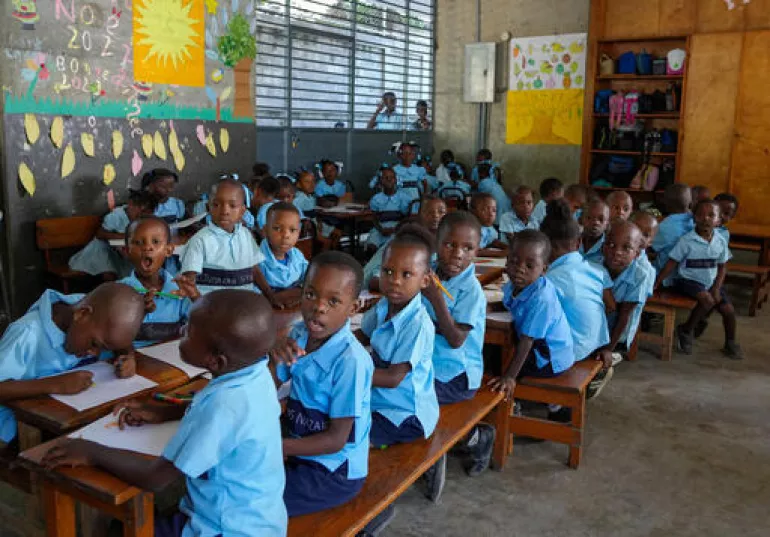In response to an alarming surge in the number of children facing unprecedented humanitarian crises worldwide, UNICEF launched today a US$9.3 billion emergency funding appeal to reach at least 93.8 million children in 155 countries and territories.
In 2024, children across the globe are expected to need life-saving humanitarian aid in a world increasingly affected by brutal conflicts, poverty, polarization, and the effects of the climate crisis. UNICEF aims to reach approximately 147 million people globally with humanitarian assistance.
“Millions of children continue to be caught in humanitarian crises that are growing in complexity and scale, and that are increasingly stretching our resources to respond,” said UNICEF Executive Director Catherine Russell. “With predictable flexible funding, UNICEF and partners can quickly support children in need from the moment an emergency strikes, while preparing for future risks to save and improve lives.”
The US$9.3 billion appeal underscores the urgency of addressing the rise in multifaceted challenges faced by children.
In conflict zones, children endure the harsh realities of violence and displacement, facing the daily threats of physical harm, emotional trauma, and the disruption of their education and essential services. At the same time, children in areas affected by violence contend with the pervasive impact on their well-being, grappling with the psychological toll of instability, and the heightened risk of exploitation and abuse.
Climate change is also worsening the scale and intensity of emergencies. In regions struggling with its impacts, children bear the brunt of environmental challenges, jeopardizing their health, creating food and water insecurity, and limiting access to education.
In the first half of 2023, unequally distributed and non-flexible funding across emergencies once again challenged humanitarian actors’ ability to respond to growing needs. Fifty per cent of funding is focused on only five emergencies: Afghanistan, Ukraine and the regional refugee response, the Syrian Arab Republic, Syrian refugees hosting countries and Ethiopia. The humanitarian response to the tragic consequences of the escalation of hostilities in Gaza required US$1.2 billion for three months only, and there is risk of diverting resources from other emergencies.
As part of its Humanitarian Action for Children, which sets out the agency’s 2024 appeal, UNICEF plans to reach:
• 17.3 million children vaccinated against measles.
• 7.6 million children treated for severe acute malnutrition.
• 19.3 million children accessing formal or non-formal education, including early learning.
• 26.7 children, adolescents and caregivers accessing community-based mental health and psychosocial support.
• 1.8 million households reached with UNICEF-funded humanitarian cash transfers (including for social protection and other sectors).
• 52.4 million people accessing a sufficient quantity and quality of water for drinking and domestic needs.
• 14.8 million women, girls and boys accessing gender-based violence risk mitigation, prevention and/or response interventions.
• 32.7 million people with safe and accessible channels to report sexual exploitation and abuse by personnel who provide assistance to affected populations.
The top five appeals by funding requirements for 2024 are for:
• Afghanistan $1.44 billion
• Syrian Refugees and Other Vulnerable Populations $860 million
• Sudan $840 million
• Democratic Republic of the Congo $804 million
• Ukraine and Refugee Response $580 million
Critically underfunded emergencies include Sudan, Burkina Faso, Democratic Republic of Congo, Myanmar, Haiti, Ethiopia, Yemen, Somalia, South Sudan and Bangladesh.






